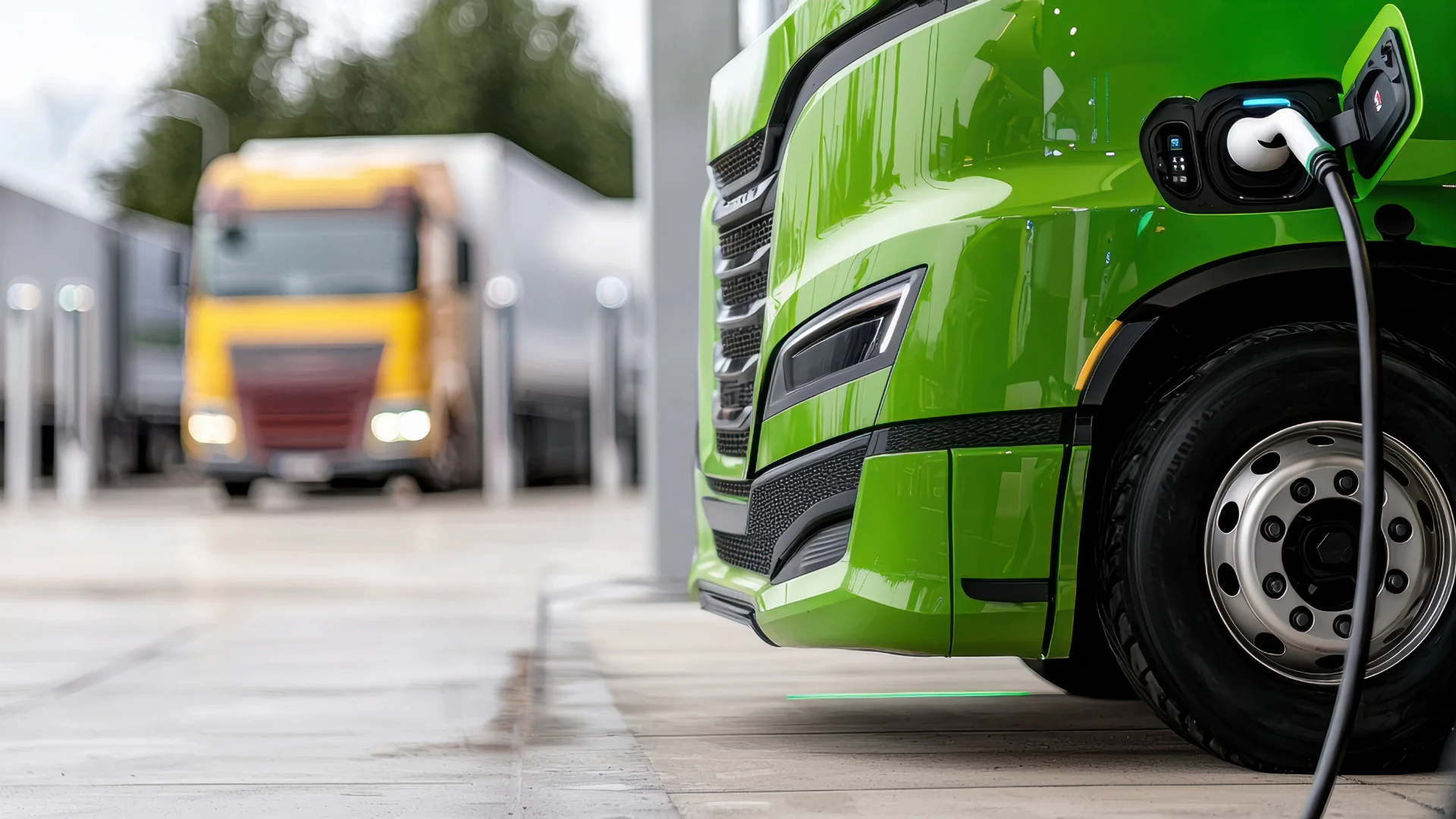If you’re already a member of Haulage Exchange or Courier Exchange, you’re probably already well versed on the benefits that collaborative logistics platforms can bring to your business.
You’ve no doubt seen a reduction in empty running brought about by more efficient load consolidation. And of course, with the vehicles in your privately-owned fleet making fewer journeys each month, you’ve also succeeded in lowering your carbon footprint too, as well as cutting out harmful N0x emissions, hydrocarbons and particulates.
With fuel and vehicle servicing costs down, and profits up, you decide to invest in cleaner diesel technology: technology that not only conforms to Euro-6/VI standards, but meet the exacting requirements of the Ultra-Low Emissions Zone in London and five further Clean Air Zones which will be established in Southampton, Derby, Nottingham, Leeds and Birmingham before 2020 – cities that you visit on a regular basis.
But with no government diesel scrappage scheme in sight, like so many medium-sized fleet operators, you don’t have the funds to replace the Euro-5/V vans and trucks in your fleet with vehicles that conform to Euro-6/VI standards. So what are your options?
Retrofitting: many Haulage Exchange members first choice…
By far the most cost-effective solution is to retrofit a selective catalytic reduction system (SCR) to your vehicle, which in buses our tests have demonstrated that it is possible to eliminate 99 per cent of nitrogen oxides in diesel engine exhausts, and – at least in theory – would mean that the vehicle conforms to UK clean air zone standards making it exempt from CAZ/ULEZ charges.
However, with just under a year to go before London’s ULEZ comes into force, the reality is altogether different. Currently, there are only nine approved retrofit suppliers on the Clean Vehicle Retrofit Accreditation Scheme (CVRAS) list. And astonishingly, none of the systems on the approved list apply to vans and trucks, because retrofit manufacturers have only developed and validated the technology for buses, which enables these heavy duty Euro-IV compliant vehicles to meet the Euro-VI standard equivalent.
This means that any Haulage and Courier Exchange member wishing to spread the burden of cost over time – which equates to around £17,000 per HGV – or is keen to run compliant retrofitted fleets before the ULEZ becomes operational, cannot currently do so.
Approved retrofit suppliers: why are there none?
So why are there currently no approved suppliers that commercial fleets operators can turn to, and most importantly, how long will it take for aftermarket suppliers to secure the necessary approval?
Colin Smith, who works for the Energy Saving Trust, the certification body that oversees the Clean Vehicle Retrofit Accreditation Scheme (CVRAS) on behalf of the Department of Transport (DfT) and the Department of Environment, Food & Rural Affairs (DEFRA), explains, “In order to meet the required standards, retrofit companies must firstly carry out a raft of controlled tests using a heavy-duty chassis dynamometer, such as at the Millbrook Proving Ground. The dynamometer is a highly precise and calibrated “rolling road” facility and linked to specialised exhaust gas monitoring analysers which can reliably and repeatedly detect and measure the NOx and PM pollutant emissions of say a diesel engine HGV.”
“After any development testing, the retrofit system manufacturer must conduct an approval test at a facility like Millbrook to validate in order to gain an approval certificate. Ordinarily this process would take a few months, but as the heavy duty testing dynamometer in Millbrook is the only one in the UK, it is booked several months in advance. Therefore, I would expect it may take at least another six months for one or two retrofit manufacturers to have gained the necessary accreditation to make the list. But it may take a full year before commercial fleets have a wide and varied choice of approved manufacturers to choose from. It is not so much the choice of approved suppliers that is limiting, as most suppliers will provide systems covering all vehicle categories. It is more to do with which HGV applications, make and model for which to spend time and effort developing a retrofit solution.”
And while there are a myriad of type-approval facilities abroad – such as VTT in Finland TNO in the Netherlands or TüV facilities in Germany – which could carry out testing, Smith thinks many companies in the UK will prefer to use Millbrook due to the fact that getting a vehicle to and back from a test facility could be difficult.
“There is nothing to stop retrofitters seeking type-approval at a foreign facility. But it would probably prove the least cost-effective option, as they would need to ship the vehicle to the test site and back.”
Dearth of type-approved suppliers a concern for the Energy Saving Trust
But is the lack of UK-based type-approval facilities with the appropriate test equipment for CVRAS certification, which has resulted in a long-waiting list for testing, a worry for Smith and his team?
Says Smith, “It is concerning for the Energy Saving Trust that suppliers cannot conduct the testing required for approval, one of our key functions is to receive applications with the appropriate test results and reports in order to list approvals that supports the sector in making decisions and achieving ULEZ compliance among fleets, we carry out audits to approve the suppliers but without product or system approvals we are largely unable to do this for the commercial van and truck market at present. It is worrying too that some retrofitters may not be able to conduct an adequate level of testing to prove that their systems work in the appropriate time-scale. We have flagged this bottleneck and the authorities are aware of the issues around test facility availability. In hindsight it is always easy to say we should have developed the scheme earlier, to have more time before implementation of CAZs, however for 2020 deadlines there is a little room, the bringing forward of the London ULEZ to 2019 has probably condensed available development time.”
A potential crumb of comfort for operators?
However, Smith doesn’t think that the Haulage Exchange members will face a scenario where there are no approved suppliers when the ULEZ takes effect in April 2019, leaving HGV drivers with no choice either to pay the £100 daily charge, or in the worst case scenario, stop running their vehicles.
He says, “I cannot speak for Transport for London (TfL), which is responsible for compliance, administration and the enforcement, but based on past experience, when the London Low Emission Zone came into being in February, 2008, there was a similar issue. As a result, operators with lorries, which did not meet Euro IV standards – but had placed an order for the anticipated work – were given a period of grace by TfL to complete the DPF installation. It is not beyond the realms of impossibility, that if there is a spike in demand next spring leaving suppliers unable to cope, TfL will take similar action. But that is a decision that only it can make. I would not recommend leaving it to the last minute in the hope that the enforcement authorities provide a period of grace, it is the obligation of the operator to operate compliant vehicles, we must remember the objective of any ULEZ or CAZ is to improve air quality for all citizens including the drivers of vans and HGVs.”
When industry-leading retrofit system suppliers such as Eminox, HJS Emission Technology, Baumot and Proventia Oy finally secure type approval, Smith estimates that the actual retrofitting process for an HGV would take “between one and two days” based on the experience of a bus retrofit.
Why retrofitting is not always the best solution for van owners
And for a van? The Energy Saving Trust cannot provide any accurate figure on timeframe or cost, but Smith expects the current lack of approved retrofitters to have less of an impact on Courier Exchange members.
He explains, “While I am unfamiliar with Courier Exchange, if we take the commercial van sector as a whole, it is fair to say that many more operators lease their vehicles than in the HGV sector. Secondly, in most cases, the replacement cycle of a van is less than a truck. Therefore, those whose leases are coming to an end will simply replace their vehicles with brand new Euro-6 compliant ones. In contrast, retrofitting is only likely to be an option for specialist vehicles with a longer service life ahead of them, where the cost of replacing the van and customising is several times more expensive than the retrofitting.”
What to do when approved retrofitters come online
But if retrofitting is seen as the best solution for van or truck owner, what additional steps must a commercial fleet operator take to ensure that his vehicle meets the ULEZ standards?
Smith explains, “If retrofit is the chosen option, the fleet manager would check the list of approved suppliers, get a quote and then proceed with the upgrade to his or her vehicle. Following completion, the vehicle owner must then visit a DVSA test centre, where the vehicle will be checked by an examiner. If the vehicle passes the assessment, it is issued with a vehicle certificate and then entered on to a database of retrofitted compliant vehicles. When the driver enters the ULEZ, number plate recognition cameras will record his licence plate, and check it against the DVLA’s retrofitted vehicles database. If the vehicle has been successfully entered, the driver will not be charged.”




